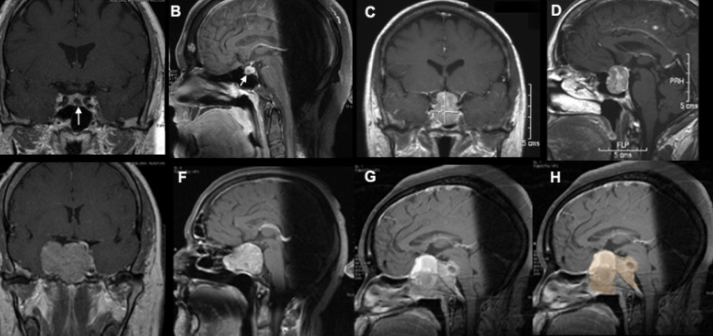When facing a possible cancer diagnosis, your doctor may suggest several imaging tests to understand what’s happening inside your body. One of the most advanced and widely used tools is Magnetic Resonance Imaging (MRI). If your doctor has recommended an MRI, you might be wondering: Why this test? How is it different from others? And what will it reveal?
This article explains the reasons doctors often choose MRI in cancer detection, staging, and treatment planning—giving you a clear picture of what to expect and why it matters.
What Is MRI?
MRI, or Magnetic Resonance Imaging, is a non-invasive medical scan that uses strong magnetic fields and radio waves to create detailed images of the body’s internal organs and tissues. Unlike X-rays or CT scans, MRI does not use ionizing radiation, making it a safer option for repeated use.
It’s especially powerful for visualizing soft tissues, such as the brain, spinal cord, muscles, liver, and reproductive organs, which makes it invaluable in many areas of cancer care.
Why Doctors Recommend MRI in Cancer Care
There are several important reasons why your doctor might recommend an MRI if cancer is suspected or already diagnosed.
1. To Get Highly Detailed Images of Soft Tissues
MRI offers unparalleled clarity when it comes to soft tissue contrast. This makes it especially useful for detecting tumors in organs like the brain, liver, prostate, uterus, and breast, where other scans might not be as precise.
2. To Determine Tumor Size and Location
Knowing the exact size, shape, and position of a tumor is crucial. MRI can map these details clearly, helping doctors plan the best approach for surgery or other treatments.
3. To Assess Cancer Stage
Staging cancer means figuring out how far it has spread. MRI helps identify whether tumors have invaded nearby tissues, lymph nodes, or blood vessels—information that guides treatment choices.
4. To Monitor Treatment Progress
MRI is not only for diagnosis. It’s often used during and after treatment to check whether a tumor is shrinking in response to chemotherapy, radiation, or targeted therapy.
5. To Reduce Exposure to Radiation
Unlike CT scans, MRI does not expose you to ionizing radiation. For patients who need multiple scans over time—especially children or younger adults—MRI is often a safer choice.
6. To Evaluate Areas That Other Tests Can’t
Sometimes, CT or X-rays are limited in showing small or complex structures. MRI can fill in the gaps, offering a clearer view of areas where other imaging methods fall short.
Cancers Where MRI Is Commonly Used
Doctors often turn to MRI for certain types of cancer, including:
- Brain and spinal cord tumors – MRI is the gold standard for nervous system imaging.
- Breast cancer – Used for women with dense breast tissue or high genetic risk.
- Prostate cancer – Multiparametric MRI helps detect and assess tumor aggressiveness.
- Liver and pancreatic cancer – MRI provides detailed images of these complex abdominal organs.
- Gynecological cancers – MRI helps assess uterine, ovarian, and cervical cancers.
- Bone marrow cancers – Detects spread within the skeletal system.
What to Expect During an MRI Scan
If your doctor recommends an MRI, here’s what typically happens:
- Preparation – You’ll remove all metal objects (jewelry, belts, etc.) before the scan. Some patients may need to fast if contrast dye is used.
- Contrast Injection (if required) – In many cancer scans, a contrast agent such as gadolinium is injected into a vein to make tumors more visible.
- The Scan – You’ll lie on a table that slides into a tunnel-shaped machine. The scan usually takes 30–60 minutes.
- Noise – The MRI machine makes loud knocking or thumping sounds. Earplugs or headphones are provided.
- Comfort – You’ll need to stay very still, but you can communicate with the technician through a microphone.
- After the Scan – There is no recovery time; you can return to normal activities unless sedation was used.
Advantages of MRI for Cancer Patients
- Radiation-free imaging for safer long-term monitoring
- High-resolution detail for soft tissue cancers
- Helps guide surgery and treatment with precise mapping
- Functional imaging that can reveal blood flow and tumor activity
- Effective follow-up tool for detecting recurrence
Limitations and Considerations
While MRI is powerful, it isn’t perfect. Some challenges include:
- Cost – More expensive than CT or ultrasound.
- Time – Scans take longer (up to an hour).
- Claustrophobia – Some patients feel anxious inside the enclosed scanner.
- Implants – Not suitable for patients with certain pacemakers, cochlear implants, or metal fragments.
- Less effective for lung cancers compared to CT scans.
Why Your Doctor Chooses MRI Over Other Scans
Doctors weigh several factors before recommending MRI:
- If soft tissue detail is critical (brain, liver, prostate, breast).
- If the patient requires multiple scans and radiation exposure should be minimized.
- If other imaging results are unclear and a more detailed view is needed.
- If surgical planning requires precise mapping of tumor boundaries.
In many cases, MRI is not used alone. Doctors often combine MRI with CT scans, PET scans, or biopsies for a more complete diagnosis.
Conclusion
Your doctor might recommend an MRI for cancer because it provides safe, detailed, and highly accurate images of soft tissues—making it one of the most effective tools for detecting, staging, and monitoring tumors. While it has some limitations, its ability to guide treatment decisions and reduce unnecessary risks makes it an essential part of modern cancer care.
If your doctor suggests an MRI, it’s usually because it offers the clearest and safest insight into your condition, helping create the best treatment plan for your unique case.
Also Read :
